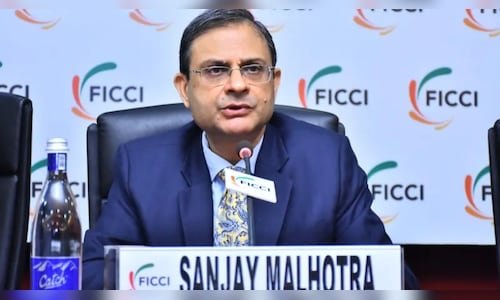He noted that the food weightage needs revisions to reflect evolving consumption patterns and expects a significant reduction in food weightage in future CPI updates.
Sen believes items provided for free, such as free food grains, should be assigned a 0% weightage in the CPI in line with international guidelines. The weightage of cereals within the food category also is likely to decrease.
Mridul Saggar, Professor at IIM Kozhikode and former executive director at the Reserve Bank of India (RBI), supported Sen’s views.
Saggar agreed that reducing the food weightage in the CPI is necessary and suggested that this adjustment could lower overall inflation by 0.2–0.3%.
He noted that the National Food Security Index also excludes free food in its calculations, aligning with global standards.
The Ministry of Statistics and Programme Implementation (MoSPI) recently released the Household Consumption Expenditure Survey for 2023-24, which provides insights into rural and urban spending patterns.
The survey revealed that average monthly per capita expenditure in rural areas was ₹4,122, while in urban areas, it stood at ₹6,996 at current prices.

This is the verbatim transcript of the interview.
Q: Is it very clear from the two household surveys that food needs to be given a lower weightage, If yes, how much?
Sen: Absolutely. Every time we have revised the consumer price index (CPI), the food share has gone down, and that is like consumption behaviour. So, the food weight will and should go down
Also Read: Urban-rural consumption gap continues to narrow: Govt survey
Q: The numbers showed that it has come down in rural areas in 2011 from 53% to about 47% now. So, should we expect a substantial downtick? I mean, you are looking at some three percentage points lower or something like that?
Sen: Yes, it will be a substantial amount because you are changing the basket after quite a while.
Q: Your thoughts, if this comes into effect as of 2025-26 (FY26), will we see a step down in inflation, and should the RBI already take into cognizance that food is, anyway, exaggerated in its weightage? And will that be a reason to be more sanguine about rate cuts in the coming policies?
Saggar: I am totally in agreement with Sen that it is a no-brainer that the weight has to come down, and that is the standard Engel’s law we have in economics that as incomes rise the share of consumption and food comes down, and that is what we have seen consistently when these consumption expenditure surveys are done.
The ballpark number, you mentioned, of about three percentage point weight fall should be roundabout right, could be marginally higher, but not very different from 3% so from the present weight, we could see it fall around 42. It is hard to pinpoint exact numbers because we do not have the full details of the consumption expenditure survey and I am sure the Ministry of Statistics and Programme Implementation’s (MoSPI) expert committee, which is going into the base revision, will do the necessary exercises at item level and then come to the sub-group level, then to the group level and then arrive at what is the right weight.
So, in some sense, you could see inflation rates month-to-month could vary but could fall by about 0.2 percentage points, not significant enough to alter the monetary policy compulsions. The monetary policy still faces the hard dilemma that inflation is higher than what is intended while growth is slowing down.

Q: It is only 0.2%, is it? I thought the impact would be more because the last few months it is food inflation that has been rising at 8-11% in the last 18 months. So, if food is taken so high and the weightage is going to come down from 46 to 42 approximately, then it’s only 0.2% which will bring the overall inflation down?
Saggar: I guess 0.2-0.3% should be the ballpark number, but you cannot pinpoint one month’s data, each month would be very different. So, the rates are year-on-year (YoY). So, you have to recognize that the CPIs would change YoY.
Also Read: Govt invites views for inclusion of free food grains in new CPI series
Q: The next point of Public Distribution System (PDS), the MoSPI themselves have invited your opinion, and I am hoping that Saurabh Garg (Secretary, MoSPI) is going to look at this interview. What’s your sense? How should PDS-free food be treated? Should the weight merely be distributed to other food items, or should it be distributed to all the other nonfood items as well? What is the advice?
Sen: Anything which is free should not come in the CPI because the weights are taken from the Household Consumer Expenditure Survey, and technically free food grain should have zero weight because they are not spending anything on it. It’s a part of their consumption, but it’s not part of their expenditure. So free food should never find its way into the basket. The weights will readjust automatically, and it will be across the whole spectrum of consumption.
For the entire discussion, watch the accompanying video


